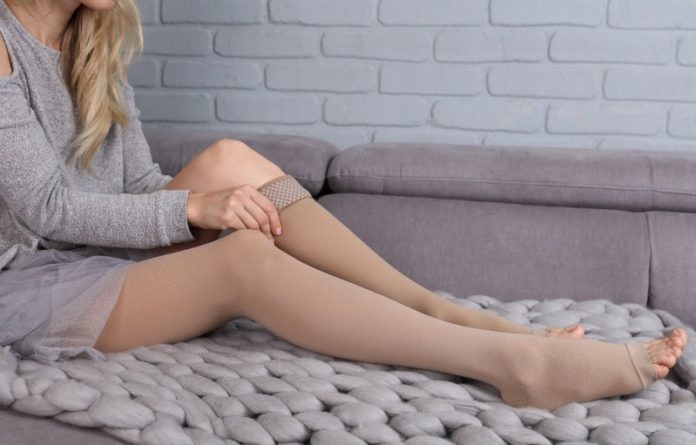
If you have had lymph nodes removed or damaged because of cancer or another illness or injury, your doctor may have talked to you about “lymphedema.” Maybe you have a good grasp on what it is and means. Or perhaps you want to increase your knowledge and understanding of lymphedema for yourself or a loved one. You’ve come to the right place! Explore our easy-to-understand guide to lymphedema, as well as the compression solutions that can help manage this condition.
What is the Lymphatic System and Lymphedema?
First things first. We have all heard of lymph nodes, but few of us actually understand what they do or why they matter. Lymph nodes act like the sink drains of the body. Lymph is a fluid rich in proteins, salt, water and white blood cells that helps fight infections and flush gunk out of the body. If the lymph nodes are damaged or removed, the “gunk” can’t flush out and drain properly. When this happens, swelling often occurs, usually in the arms or legs.
How Does Lymphedema Impact the Body?
Secondary lymphedema is the most common form of lymphedema, meaning it occurs because of something else, such as breast cancer treatment. (Forty percent of breast cancer patients experience lymphedema, especially in the arms.) While primary lymphedema is uncommon, it can happen. Regardless of the cause of your lymphedema, the impact on the body is very real. An arm or leg may become swollen, causing reduced range of motion, pain and a tightening or leatheriness of the skin. Lymphedema may also make you more prone to infections in the affected areas.
Living with Lymphedema
While there is no cure for lymphedema, there are certainly ways to cope and manage your lymphedema.
- Approved Exercise. Your doctor can advise you of safe and effective exercises that encourage lymph fluid to drain, thus reducing swelling
- Massage Therapy. Done by a trained professional, manual lymph drainage is a massage that can help push fluid away from the swollen limb
- Compression Sleeve or Stocking. This garment fits snuggly on your affected arm or leg and can help the fluid flow out.
- Protect Your Skin. Keeping your swollen limb clean, well-lotioned and protected against cuts, scrapes or injury is an important part of preventing infections. If you do get a cut, it’s important to clean it right away, then use an antibacterial ointment and bandage.
- Allow Fluids to Move Freely. Avoiding tight clothing or jewelry and having a blood pressure cuff applied to the unaffected arm are a few ways to ensure blood and lymph fluid can move as freely as possible.
More About Compression Garments
If you experience lymphedema, one of the most common and effective treatments is using compression sleeves or stockings. At Pretty in Pink Boutique, we are experts in listening and fitting you with the compression garment you need, as well as training you to put it on and use it correctly. Compression has come a long way. While we do continue to offer garments in a variety of flesh tones for customers who prefer to minimize the visibility of the garment, we also carry a selection to show off your spunk and personality. Who says you can’t inject fun and flare into your daily outfits or fancy occasions?
For further questions on lymphedema and compression garments, please contact us via phone, email or schedule a custom fitting at any one of our four Middle Tennessee locations. We offer support, a listening ear, and an incredible selection of compression garments and so much more. Call (615) 777-PINK.
Pretty in Pink Boutique Locations & Contact
Maplewood Office Park
400 Sugartree Ln Ste 400
Franklin TN
Phone: (615) 791-8767
Vanderbilt 100 Oaks
719 Thompson Ln Ste 25010
Nashville TN
Phone: (615) 866-4102
Northpoint Office Park
2231 NW Broad St Ste C
Murfreesboro TN
Phone: (615) 866-4555
Hendersonville
131 Indian Lake Rd Ste 213
Hendersonville TN
Phone: (615) 866-4547
















